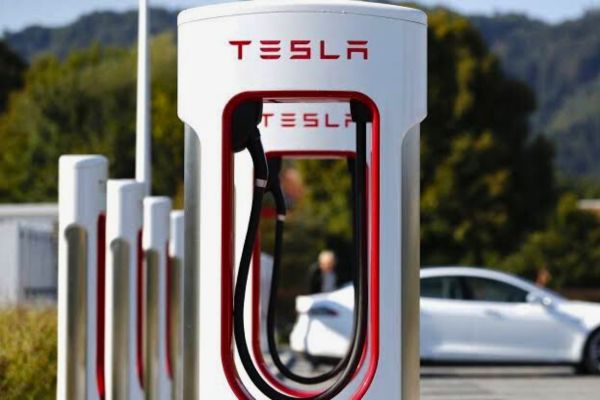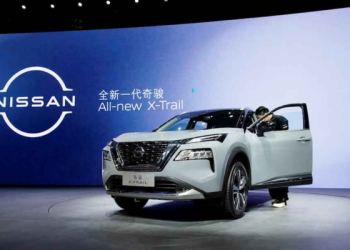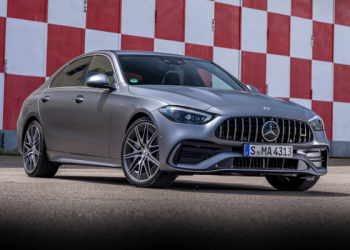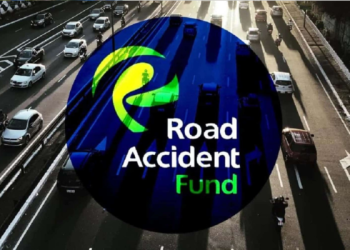Polestar and Volvo have made a significant decision to adopt Tesla’s proprietary charging port, known as the North American Charging Standard (NACS).
This move allows their electric vehicles (EVs) to access Tesla’s extensive Supercharger network, which offers fast-charging capabilities.
The agreement states that starting in 2025, all Polestar and Volvo EVs will be equipped with the NACS port, enabling them to charge at Tesla Supercharger stations across Canada, Mexico, and the United States.
The Supercharger network currently comprises over 12,000 fast-chargers and continues to expand.
The adoption of Tesla’s charging port marks a seismic shift in the charging infrastructure for electric vehicles, with more automakers joining the trend.
Polestar and Volvo’s decision aligns them with Ford, GM, and Rivian, who have already made the transition to the NACS port. The objective behind this shift is to enhance accessibility and convenience for electric vehicle owners, facilitating the transition to sustainable transportation.
For existing Polestar and Volvo EVs equipped with CCS-type charge ports, an adapter will be made available to connect to Tesla’s chargers.
This means owners of models like the Volvo XC40 Recharge, C40 Recharge, EX30, and the upcoming EX90 SUV can still benefit from the Supercharger network.
Polestar’s current lineup includes the 2 hatchback, with the Polestar 3 SUV scheduled for production in early 2024, followed by the Polestar 4 and Polestar 5 sedan.
The availability of the NACS port for the latter two models is yet to be confirmed. Additionally, Volvo and Polestar plan to offer a NACS-to-CCS adapter for future 2025 models, allowing owners to charge using the CCS-style charger if they prefer.
Jim Rowan, Volvo CEO emphasises that easy and convenient charging infrastructure is crucial to encourage more people to transition to electric driving and promote sustainability.
The commitment from Polestar and Volvo to embrace Tesla’s charging structure reflects their dedication to providing a seamless charging experience for their EV customers.
While Polestar and Volvo are the first foreign automakers to adopt the NACS port, U.S. automakers such as Ford, GM, and Rivian have already embraced this charging standard. There are also discussions suggesting that Hyundai and Stellantis could be next in line to implement the NACS port.
Four facts you should know about Tesla Superchargers:
Here are four key facts about the latest Tesla Superchargers:
1. Fast Charging:
Tesla Superchargers are designed to charge Tesla electric vehicles quickly. They use advanced technology to deliver a large amount of energy to the vehicle’s battery in a short time.
2. Extensive Network:
Tesla has created a widespread network of Superchargers around the world. These chargers are strategically placed along major highways and popular routes, making long-distance travel more convenient for Tesla owners.
3. V3 Supercharging:
The newest Tesla Superchargers, known as V3 Superchargers, offer even faster charging speeds than previous versions. They can provide a peak charging rate of up to 250 kW, allowing Tesla vehicles to add hundreds of miles of range in just a few minutes.
4.User-Friendly Features:
Tesla Superchargers are designed with user convenience in mind. They have easy-to-use connectors, simplified payment methods, and integration with the Tesla mobile app.
Some Supercharger stations also offer additional amenities like restrooms, Wi-Fi, and food options.
In summary, the latest Tesla Superchargers offer fast charging, a wide network, advanced technology, and user-friendly features, making electric vehicle travel more practical and accessible for Tesla owners.
Read more on: Top four profitable Tesla products you should know about





![Ferrari Elettrica EV [Source ALBA Cars]](https://autojournal.africa/wp-content/uploads/2025/11/Ferrari-Elettrica-EV-Source-ALBA-Cars-350x250.png)
![Toyota solid-state battery [Reuters]](https://autojournal.africa/wp-content/uploads/2025/11/Toyota-solid-state-battery-Reuters-350x250.png)














